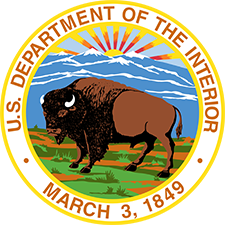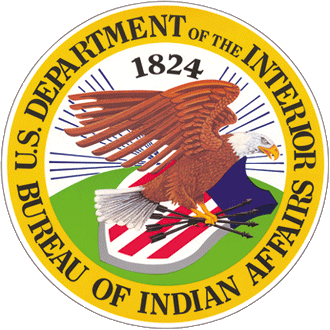The word “broadband” refers to high-speed internet access technology that is always on, which is different from older, slower dial-up internet access technology that requires users to connect through a conventional telephone line. Digital Subscriber Line (DSL), Broadband over Powerlines (BPL), Cable Modem, Satellite, Wireless, and Fiber are all examples of broadband technologies.
Federal Communications Commission (FCC) statistics show that American Indian and Alaska Native (AI/AN) communities have less access to broadband than the general U.S. population.
Disparities in Fixed and Wireless Broadband Access
The FCC’s benchmark speed for fixed broadband capability is 25 Mbps/3 Mbps.
FCC data from 2019 shows that over 99% of housing units in U.S. urban areas have access to broadband service, but only 65% of housing units on rural AI/AN lands have the same level of access.
There is also a disparity in terms of wireless broadband access.
In 2019, 99.9% of the U.S. population lived in areas with Mobile Long Term Evolution (LTE) coverage compared to 97.5% of people in AI/AN communities, according to FCC statistics.
Mobile LTE, sometimes called 4G LTE, refers to wireless broadband with a minimum speed of 5 Mbps/1 Mbps.
Barriers to Access
The barriers to broadband deployment in AI/AN communities are varied and can be found across sectors. From a lack of financial investing in tribal communities to the immense geography in question to complex and burdensome regulatory environments, the Office of Indian Energy and Economic Development has identified seven fundamental barriers to deployment:
- Lack of coordination
- Insufficient data
- Missing building blocks
- Insufficient funding
- Complex permitting
- Low adoption
- Weak connection to economic development
A large proportion of AI/AN lands are located on rough terrain in rural areas. Most rural locations are sparser than urban areas, which increases the cost for businesses to serve those areas, and thus has created an obstacle to broadband deployment in AI/AN communities.
FCC data indicates that 73.3% of rural non-AI/AN areas are covered by at least one terrestrial fixed-broadband provider. However, only 46.6% of rural AI/AN communities have fixed broadband coverage.
Addressing Disparities in Access
The federal government is aware of the disparities in broadband access that exist and working on ways to decrease the gap in broadband access between AI/AN and non-AI/AN areas.
Indian Affairs
- National Tribal Broadband Grant (NTBG): The purpose of the NTBG program is to bring broadband services to AI/AN communities that need them. Grant recipients can hire qualified consultants to research the potential deployment or expansion of high-speed internet transmitted through DSL, BPL, cable modem, fiber, wireless, and satellite.
- National Tribal Broadband Summit is a unique annual opportunity for tribal leaders, representatives of tribal organizations, representatives of schools and school districts serving under-connected Native students, federal program managers, and policy-makers at multiple levels of government to come together and share their innovations in expanding broadband access and adoption in tribal communities.
FCC
The FCC established a Native Nations Communications Task Force comprised of 19 AI/AN members and eight FCC members to carry out the FCC’s mission of increasing access to affordable internet services on AI/AN lands.
The FCC’s Universal Service Fund currently provides support through four programs:
- Connect America Fund (formally known as High-Cost Support): The program subsidizes the cost of providing service to high-cost areas for qualifying telecommunications companies. This allows users in rural areas to pay reasonable rates comparable to those charged to users in urban areas.
- Lifeline Program: The program provides lower-cost phone and internet service to qualifying low-income consumers.
- E-Rate: The program offers funding to schools and libraries to access internet and telecommunications services. Schools and libraries may obtain discounts ranging from 20-90% of the costs of eligible services.
- Rural Health Care Support: The program provides funding to reduce the cost of internet and telecommunications services for rural healthcare providers.
View a map with fixed broadband data from different areas of the United States.
To learn more about support and programs offered through the FCC, please call (202) 418-2930.
Department of Agriculture
- ReConnect Broadband Grant and Loan Program: The program offers eligible applicants, including Indian Tribes, funding opportunities for broadband deployment in rural areas. Funds may be used for construction, improvement and acquisition of qualifying facilities, acquisition of an existing system under certain circumstances, and covering some pre-application expenses.
- Tribal College Initiative Grants: The program provides grants to fund tribal colleges to make capital improvements to their facilities and purchase equipment.
- Rural Broadband Access Loan and Loan Guarantee Program: The program offers loans and loan guarantees to eligible applicants, including Indian tribes or tribal organizations, to provide funds for the costs of construction, improvement, or acquisition of facilities and equipment needed to provide service at the broadband lending speed in eligible rural areas.
- Telecommunications Infrastructure Loans & Loan Guarantees: The program provides financing to eligible applicants, including federally recognized tribes, for the construction, maintenance, improvement, and expansion of telephone service and broadband in rural areas.
Department of Commerce
- 911 Grant Program: The program provides grant funding to support state and local efforts to deliver optimal 911 services.
- FirstNet Authority: Established by Congress in 2012 as an independent authority within the Department of Commerce, FirstNet develops, operates and maintains the nationwide, public safety broadband network that equips first responders to save lives and protect U.S. communities.
National Telecommunications and Information Administration
- State and Local Implementation Grant Program: The program offers eligible applicants, including tribal governments, with the resources to work with stakeholders throughout the state or territory to identify needs, gaps, and priorities for public safety wireless broadband.
- Tribal Broadband Connectivity Program: The Coronavirus Response and Relief Supplemental Appropriations Act, 2021, established $1 billion in funds for Tribal Broadband Connectivity Grants to support access to and adoption of broadband service on tribal lands. Funding can be used for broadband infrastructure deployment, affordable broadband programs, distance learning, telehealth, digital inclusion efforts, and broadband adoption activities. The application for the program has not yet been announced.
Additional Information
Related Pages
Related Documents
Contact Us
Washington, DC 20240


